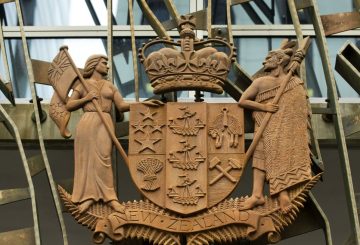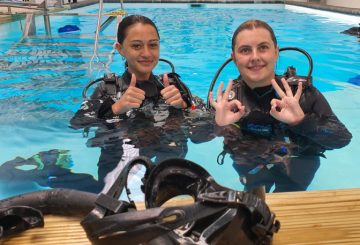Ang mga guro ng beterinaryo sa School of Veterinary Science ng Massey University ay nanalo ng internasyonal na parangal para sa kanilang makabagong paggamit ng mga modelo ng hayop sa pagtuturo, sa halip na gumamit ng mga buhay na hayop. Ang mga guro ay kinilala sa Lush Prize, ang pinakamalaking parangal para sa mga pagsisikap na wakasan o palitan ang pagsubok sa hayop, para sa kanilang gawain upang ganap na alisin ang paggamit ng tunay na tupa sa isang pangunahing klase ng pagtuturo sa kirurhiko.
Gumugol ng mga taon ang mga guro sa paghahanap ng mga malikhaing materyales upang bumuo ng mga modelo ng hayo Ang mga ito ay mula sa mga simpleng modelo na gawa mula sa iba’t ibang mga item hanggang sa mga kumplikado tulad ng Harriot the Hereford, isang makatotohanang simulador ng calving. Ang modelo ng calving, na nagkakahalaga ng $75,000 at na-import mula sa Canada, ay nagbibigay-daan sa isang nababaluktot na modelo ng butil na maiposisyon sa loob ng pekeng baka sa anumang paraan na maaaring masikip ang isang tunay na butil.
Ang paggamit ng mga modelong ito ay nagbibigay-daan sa mga estudyante na malaman kung paano makilala kung maling ipinakita ang isang buto at kung paano muling posisyon ito para sa ligtas na kapanganakan. Nagtayo din ang mga kawani ng mga pangunahing modelo para sa pagsasanay sa suturing, gamit ang mga materyales tulad ng silicone at iba’t ibang mga grado ng katad.
Gumagamit din ang mga guro ng pekeng pagsusuka ng aso upang matulungan ang mga mag-aaral na matutong mag-diagnose ng mga sakit sa aso. Maaari silang magbigay ng mga pekeng gamot mula sa isang dummy parmasya at magbigay ng intravenous therapy sa pekeng aso.
Habang nagtatrabaho ang mga guro upang palitan ang mga tunay na hayop ng mga modelo para sa pinaka-nasasakay na ehersisyo, ang mga tunay na hayop ay ginagamit pa rin nang malawak upang matulungan ang mga estudyante na matuto Gayunpaman, nangangahulugan ng mga modelo ang mga estudyante ay mayroon nang mahahalagang kasanayan na pinagmamalaan bago nila kailangang gamitin ang
Ang pera na iginawad mula sa Lush Prize ay muling mamuhunan sa mga modelo ng klinikal na kasanayan sa Massey, ayon sa pinuno ng School of Veterinary Science, si Propesor Jon Huxley. Nabanggit din niya na nagaganap ang isang pandaigdigang kilusan upang palitan ang paggamit ng mga tunay na hayop sa pagtuturo, na may mga guro ng beterinaryo na nagbabahagi ng mga ideya sa buong




























































